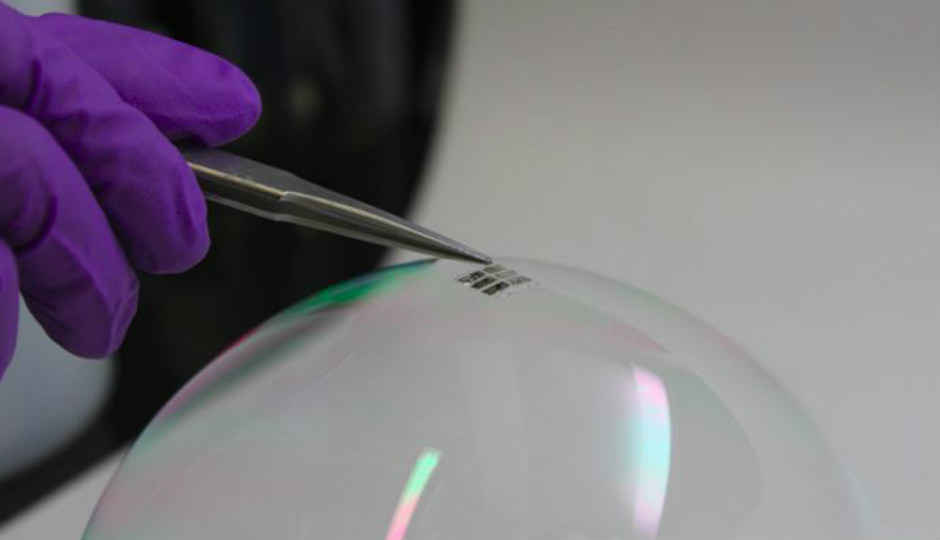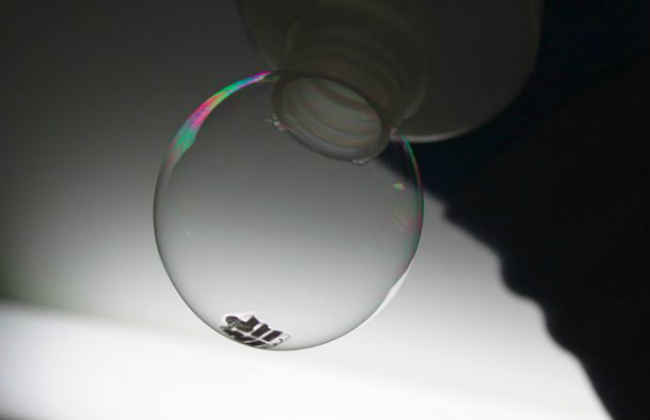MIT Research has ultra-thin solar cells lighter than a soap bubble

The ultra-light, flexible solar cells with incredibly high power-to-weight ratio can find application in a number of places, once introduced to the world.
A team of engineers at Massachusetts Institute of Technology (MIT) has developed a concept of incredibly thin photovoltaic cells that are lighter than a soap bubble. These solar cells are only a laboratory product as of now, and can be placed anywhere – balloons, shirt sleeves, on mobile devices, or, as MIT states, inside a soap bubble. The cells have about 1/50th the thickness of a hair strand, and is so light that you stand at the risk of blowing it away with a single breath.
Although it may take years to move the concept to the commercial forefront, the concept lays proof of more widespread and easier harvesting of solar energy in future. With constant efforts being laid underground for promoting clean energy alternatives, the minuscule chipsets can be serially arranged to harvest enough power to operate helium balloons, household lights, and even automobiles. The engineering team at MIT Research, instead of relying on separately fabricating the solar cell and the protective base layer with the glass or plastic substrate, forged the three together. This led to negating the inefficient objects that lower the power-to-weight ratio of standard solar cells, and as MIT Professor Vladimir Bulovic puts it, “The innovative step is the realization that you can grow the substrate at the same time as you grow the device.”
In this incredibly light solar cell, the team of engineers used parylene, a commonly-used flexible polymer, as both the substrate (the middle layer) and the overcoating, while the primary light-absorbing layer was made of an organic compound called Dibutyl phthalate (DBP). The layers are “grown” or fused together using vapour deposition techniques inside a vacuum room in room temperature. This is yet another advantage of the tiny solar cell against the traditional ones, which require harsh chemicals and high temperature environments to forge.
The researchers laid more importance to the point that this may not be the only configuration for manufacturing the cells, and quantum dots can also be considered as an efficient alternative to DBP, and these can be laid on to other substrates like fabric or paper, for practical implementation. The output demonstration showed power generation of nearly 6W/gram, which is nearly 400 times higher than the conventional silicon solar cells.
"We think it’s a lot of hard work ahead, but likely no miracles needed"
This new concept technology may have the massive potential to revive solar energy from its present state of expensive alternative. Solar energy harvesting matured before it peaked in the labs, and as a result, failed to fulfill its potential as widely-usable clean energy resource, until now. With the latest technology, the solar cell chips can be placed practically anywhere, on any surface, and with the right combination of materials and circuitry, generate enough power required to power everyday livelihood. The days may be far away, but the MIT team is sure of its future. “How many miracles does it take to make it scalable? We think it’s a lot of hard work ahead, but likely no miracles needed.”
We certainly hope so, Prof. Bulovic.






